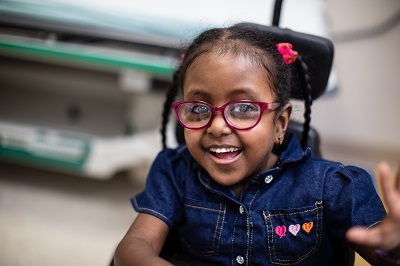Condition
Juvenile Dermatomyositis
Key points about juvenile dermatomyositis
- Juvenile dermatomyositis (JDM) is a rare disease that causes muscle inflammation and a skin rash.
- Symptoms often first appear in children between ages 5 and 10.
- Symptoms include fever, rash, muscle weakness and pain, and calcium deposits under the skin.
- The condition also causes a rash around the eyelids, knuckles, or finger joints. A rash may also occur on the elbows, knees, and ankles.
- Some children may have a complete remission of the disease. Others may have chronic symptoms that continue.
Frequently Asked Questions
What is juvenile dermatomyositis?
What causes juvenile dermatomyositis?
What are the symptoms of juvenile dermatomyositis?
How is juvenile dermatomyositis diagnosed?
How is juvenile dermatomyositis treated?
What are the complications of juvenile dermatomyositis?
How should I help my child live with juvenile dermatomyositis?
How do you manage juvenile dermatomyositis?
When should I call my child’s healthcare provider?

Rheumatology Treatment at Children's National Hospital
Pediatric specialists at Children's National Hospital in Washington, D.C., have the expertise to diagnose, treat and manage autoimmune and inflammatory disorders in a growing child's muscles, tissues and joints. Discover more about the treatments we offer.
Meet the Providers Who Treat Juvenile Dermatomyositis
Departments that Treat Juvenile Dermatomyositis

Neuromuscular Medicine Program
The Neuromuscular Medicine Program leverages the expertise of a multidisciplinary teams, cutting-edge research and innovative technologies to care for a spectrum of neuromuscular conditions affecting children from infancy to age 21.

Rheumatology
Rheumatology experts at Children's National manage autoimmune and inflammatory disorders affecting a growing child's muscles, connective tissues and joints, including fibromyalgia, arthritis, lupus and more. Learn more about this department.
Schedule Appointment



